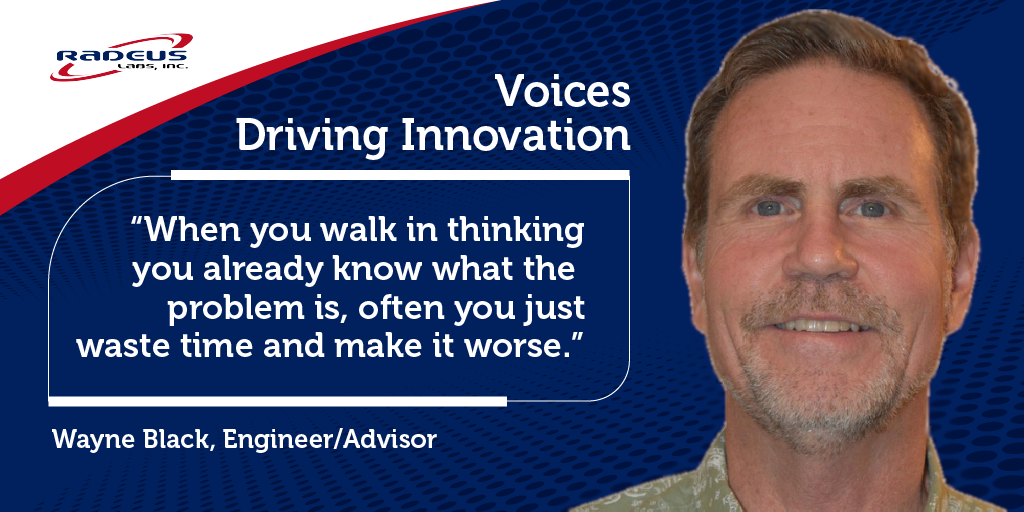If you weren’t among the 16,000+ attendees at the 60th Sea-Air-Space Expo, you missed more than just an impressive display of naval tech — you missed a pulse check on where the defense and maritime industries are heading, and who’s leading the charge.
Billed as the largest maritime expo in the U.S., this year’s Sea-Air-Space event, hosted by the Navy League, was a milestone moment. With 430 exhibitors, 297 SES & Flag Officers, four exhibit areas (plus a sprawling outdoor tent), and 57 international delegations, it was a commanding showcase of innovation, strategy, and collaboration — all under one roof.
A Strategic View from the Floor
Radeus Labs was in attendance this year via our CEO, Juliet Correnti. As a first-time attendee, she wasn’t sure what to expect — but she quickly found herself in the thick of strategic conversations, high-level networking, and dynamic innovation.
"(The expo was) truly an unforgettable experience! A big thank you to CK Tan, Paulino Soto, Andrew Mrozewski, Roger Kuroda, and General Atomics for making my first show easier. I can't wait to attend next year. #SAS2025"
The Navy’s presence was especially strong, bolstered by fewer travel restrictions compared to other branches. Uniforms filled the aisles, adding to the energy and underscoring just how mission-focused the show really is.
AI, Tariffs, and Tactical Shifts
Among the big conversations? Artificial intelligence — no surprise there. From decision-support tools to autonomous systems, AI was the underlying theme in nearly every major announcement. The buzz was less about “what’s coming” and more about “how soon can we scale?”
 That said, the first day of the conference also coincided with a new round of reciprocal tariffs, and the implications were a hot topic. For small and mid-size defense companies — especially U.S.-based manufacturers like Radeus Labs — there’s real opportunity in the current climate. “Made in America” isn’t just a slogan right now — it’s a serious priority.
That said, the first day of the conference also coincided with a new round of reciprocal tariffs, and the implications were a hot topic. For small and mid-size defense companies — especially U.S.-based manufacturers like Radeus Labs — there’s real opportunity in the current climate. “Made in America” isn’t just a slogan right now — it’s a serious priority.
A prime example of this came from General Atomics Electromagnetic Systems (GA-EMS), who used the expo to announce a significant milestone:
SAN DIEGO – April 7, 2025 – GA-EMS signed a Memorandum of Understanding (MOU) with Rafael Advanced Defense Systems Ltd., Israel, establishing GA-EMS as the U.S. prime contractor for manufacturing a new long-range, precision-guided strike missile. The Bullseye™ missile is designed to meet U.S. military specifications and enable multi-platform launch from air, ground, and sea — all at an affordable price point.
This announcement underscores the strategic role Sea-Air-Space continues to play as a launchpad for industry-defining partnerships and U.S.-aligned defense manufacturing.
Daily Receptions, Late Nights, and Meaningful Mingling
Unlike many defense and tech shows, Sea-Air-Space carved out intentional time for informal connection. A two-hour reception every day helped balance long exhibit hours with relaxed conversations, meaningful networking, and a chance to follow up on in-session discussions.
That energy carried over into every hallway. “It was busy — but in a good way,” Juliet said. “You could tell there’s real momentum, even with some of the challenges we’re facing as an industry.”
If You Missed It, What To Plan for Next Time
If you didn’t make it this year, here’s what you missed — and why you should add Sea-Air-Space 2026 to your calendar now:
- A front-row seat to emerging tech: From satellite-enabled communications to new AI battlefield applications, the show’s tech reveals were robust and varied.
- High-level leadership access: With nearly 300 SES and Flag Officers onsite, this was a rare chance to connect with top brass and decision-makers in a single space.
- Peer insight and collaboration: Juliet noted that primes are actively seeking new small business partners — an encouraging signal for companies like Radeus Labs.
- Global context: With 57 delegations attending, there were plenty of cross-national conversations about capability alignment and shared defense priorities.
 Final Thoughts from Radeus Labs
Final Thoughts from Radeus Labs
Our CEO walked away optimistic — not only about the strength of the U.S. defense ecosystem but about the growing recognition of agile, U.S.-based suppliers and innovators. Companies like General Atomics EMS were actively looking for satellite-focused vendors, and there was good news on component lifecycle extension from partners like Get Engineering (pictured), NVIDIA, and PNY.
For a show grounded in tradition but focused on the future, Sea-Air-Space delivered. From practical insight to big-picture trends, the 60th edition lived up to its legacy — and laid the groundwork for what’s next.
Pro Tip for first-time attendees from Juliet: "Do your homework. Be ready for long days — and longer nights. And heads up: registration is upstairs."
Bringing Aging Tech Up to Mission Speed
As conversations at Sea-Air-Space made clear, staying mission-ready means more than just adopting new technologies—it also means upgrading legacy systems to meet modern performance standards. For those operating with aging antenna control units (ACUs), there's a smart way forward that doesn’t require tearing everything down to build from scratch.
📘 Explore your upgrade options in our free guide: A Practical Upgrade for Aging Antenna Control Systems.

.png)




